 Leading Blog | Posts by Month |
 Leading Blog | Posts by Month |
08.31.13

LeadershipNow 140: August 2013 Compilation
See more on
Posted by Michael McKinney at 12:07 AM
08.29.13

4 Design Thinking Tools for Engaging Your Team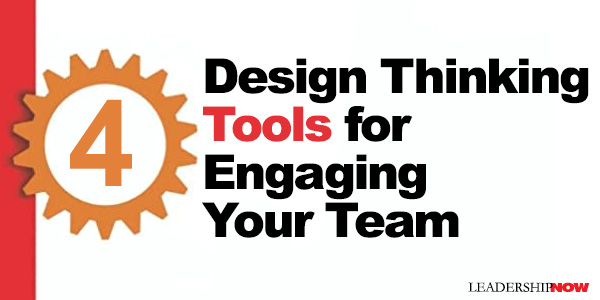
APPLYING the tools of design thinking to help your team conquer its goals doesn't mean hunkering down on your own with an org chart in a dimly lit office to devise the perfect execution strategy. Design thinking is about engaging with your team at its most fundamental levels. It's amazing how many little problems germinate at the earliest stage – the problem definition stage – and expand into bigger problems whose solutions also grow in complexity. Finding clever solutions to big, tough, problems requires harnessing your managerial creativity to really understand the problem you and your team are solving. Creativity—contrary to popular myth—does not emerge spontaneously from nothing. One way to think about creativity is as the novel synthesis of data. Those creative shower moments rely on lots of data. If there is no data to mull over, then it's just a boring showing. Below are four design thinking tools that you, as the manager of a talented team, can use to build a creativity-enhancing dataset. All of that data, cleverly applied, will extend your team's ability to boost its operational and innovative performance. Design thinking is a method for understanding complex problems – to really get at their genesis – and developing ways to eliminate or, better yet, leverage those problems into novel solutions. While this still sounds cryptic and too-good-to-be-true, these tools can sharpen your creativity to help you uncover obscured facts and use your knowledge in new ways. Where problems lurk unnoticed How well do you really understand how your team executes a typical project from day one to the very end? There are different stages in a project. Team members' daily roles can be different depending on the project life-cycle. They have a lot of data some of which may even be hidden from themselves. Journey mapping is the art of observing what is really going on. Where are your team members using improvisations to overcome a process deficiency? Heck, you and your team may be so used to making some shortcuts that you don't even see them. Journey mapping requires careful investigation of the process. Yes, it's time-consuming, but you've probably already solved the easy problems, and finding the really deeply embedded problems requires objective observation. Collectively mulling the data Mind mapping is a method for finding useful patterns hiding in lots of noisy data. All of those observations can get you and your team thinking about what's happening throughout the project lifecycle. You have to help your team articulate those ideas and capture them. Sticky notes are the stock-in-trade of design thinkers. Everyone on the team armed with a block of sticky notes is a source of deep process knowledge and ideas. Getting the team around a table and sharing ideas and recording them on sticky notes is a method of capturing institutional knowledge, some of which may not have been explicitly articulated before. After many rounds of sharing ideas and letting everyone build on ideas, you'll be able to see a rich set of patterns. Use the patterns to isolate problems. Looking for a path Hypothesis generation is about figuring out what creates the problems and how to solve them. Solutions aren't solutions until you know that they work as you expect. Until then, your proposed solutions are just hypotheses. That's a pretty powerful notion really. Hypotheses can be wrong or need tweaking and that's fine. Your team can offer hypotheses without the turmoil of suggesting solutions that may fail. Figuring out if a hypothesis holds water is easier and more productive than starting at this point to create The Solution based only on the data that you have so far. Hold back on jumping to The Solution. There are still steps that will help produce even better outcomes. Using your hands to activate your brains Prototyping helps you prove or disprove the hypotheses. You can prototype anything including processes. Allow time and space to try things out physically. PowerPoint presentations full of fancy renderings are good for generating excitement. Prototypes generate hard data, not ephemeral comments about ‘good ideas.' Prototypes are ideas that you and your team touch and are often underestimated beyond the world of product design. How do these design thinking tools boost your managerial creativity and your team's achievements? Our research with high performing teams at large multinational companies like Toyota and IBM all the way to non-profit organizations that have used design thinking has uncovered many team enhancements. These activities listed above engage the whole team. These steps work best when as many of the team members participate as possible. There's a boost in cross-team communication enriching collaboration. A better communicating and collaborating team ultimately generates comprehensive ideas leading to higher-quality activities. Your management skills will help them spend time really understanding the problem. Too often we want to start working on The Solution. Disruptive and highly valuable innovations come from really understanding the problem and finding a solution that really nails the problem rather than put a bandage over the symptoms. It takes a creative manager to engage their teams deeply, and that deep engagement engenders trust and sense of purpose.  
Posted by Michael McKinney at 09:42 PM
08.28.13

7 Metaphors for Leadership TransformationPeter Fuda introduces in Leadership Transformed, seven interdependent metaphors to explain and accelerate leadership transformation in leaders at any level.The seven metaphors help you to get a grasp on the concepts and issues involved in leadership development. Leadership development doesn’t happen in parts. These interdependent metaphors emphasize the holistic nature of leadership development. They are: 1. FIRE: The motivational forces that initiate and sustain transformation efforts; including a burning platform and burning ambition, as well as personal and organizational reasons for change. Fire is at the center of the seven metaphors because if the why isn’t there, the other factors are just going through the motion. Fuda emphasizes burning ambition—fire from within—as the only motivation that sustains. You may change out of fear—burning platform—and it may provide the initial spark, but it burns briefly. 2. SNOWBALL: A virtuous snowball of accountability that propels the change effort forward; starting with the leader, and building momentum as others are "swept up" in the journey. Building momentum is contingent upon getting a critical mass of leaders on the journey—perhaps even replacing those who are not committed to growth. Uncommitted leaders only cause drag on the snowball by not living the agreed standards of behavior. 3. MASTER CHEF: Artful application of the "leadership science" (frameworks, tools and strategies), which enable a leader to advance from amateur cook to "master" chef. Pioneering French chef Marcel Boulestin once said “cooking is not chemistry, it’s an art. It requires instinct and taste rather than exact measurements”. Similarly, transformation is accelerated when leaders work fluidly within a recipe (change frameworks), and artfully deploy their utensils (tools) and cooking methods (strategies). Leaders should become less rigid and more intuitive over time. This requires that a leader develop critical thinking skills and a deep understanding of where they are going and what leadership is. Otherwise they become tied to formulas and rote practices. 4. COACH: A team of consultant(s), colleagues and supporters that collectively coach a leader toward their aspirations. It’s not about coaching. It’s about being coached from a variety of sources—consultants, colleagues, and family members. We can learn from anyone. Coaching is most powerful when all groups identify mutually beneficial outcomes from the leader’s transformation, and create a trusting environment for that coaching to take place. Hunter S. Thompson said, “He who is taught only by himself has a fool for a master.” 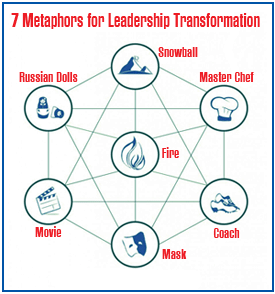 5. MASK: This metaphor has two aspects: the concealment of perceived imperfections, and the adoption of an identity that is misaligned with a leader’s authentic self, values or aspirations. 5. MASK: This metaphor has two aspects: the concealment of perceived imperfections, and the adoption of an identity that is misaligned with a leader’s authentic self, values or aspirations.
The mask is a heavy burden to carry. It creates inner conflict with a leader’s deeply held values and aspirations, and can negatively impact on important relationships. When leaders drop their mask in favor of being their "authentic self," the power this unleashes is atomic in scale; they get more done, build more trust, have far more enriching interactions and feel more fulfilled. 6. MOVIE: Processes for increasing self-awareness and reflection, which allow a leader to "edit" their performance, and direct a "movie" in line with their leadership vision. Often leaders find themselves acting in a repetitive movie—their own version of Groundhog Day, doing the same thing day after day with the same result. By stepping out of the movie and viewing the footage objectively in the editing suite, leaders can hone their reflective capacity, and eventually, learn how to slow down their movie. From this place of stillness, leaders can begin to direct their own movie and choose a better response—in real time. A good metaphor for understanding purposeful leadership. 7. RUSSIAN DOLLS: A complimentary set of journeys that interact with a leader’s personal journey of transformation. A leader’s personal journey never exists in isolation; it is surrounded by multiple other journeys occurring concurrently. When the journeys are aligned, something magical can happen. Conversely, whenever one doll tries to pull in a different direction, its proximity to the other dolls ensures that it doesn’t get very far. 
Posted by Michael McKinney at 09:45 PM
08.27.13

The Art and Science of Perfect Timing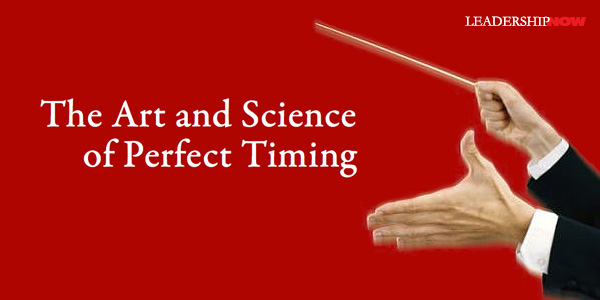
WE SAY timing is everything. And it is. But most of the time it just seems like good luck. In When, Stuart Albert says that using the right tools we can become better at managing and deciding issues of timing. Good timing is a skill that can be acquired. We miss timing issues “because the way we describe the world and the tasks we must accomplish omit the kinds of facts we need….They fail to include all the sequences, rates, shapes, punctuation marks, intervals, leads, lags, overlaps, and other time-related characteristics that are part of the temporal structure of everything that happens, every action that is taken, every plan that is implemented.” And we routinely omit them from our thinking. I had never thought of it that way. I was intrigued. If we don’t look for and note time-relevant characteristics like sequences, rates, duration, beginnings, and endings, we won’t have the information we need to make good timing decisions. For example, we question whether or not the incentives we have chosen are the right ones, but we don’t consider why those incentives became important at that particular time. Albert likens the structure of timing analysis to the structure of a musical score. There is a horizontal and a vertical dimension to it. Five horizontal—sequence, punctuation, interval, rate, and shape—and there is a vertical dimension—polyphony. The way they come together in an organization gives us insight into timing. These patterns form the temporal architecture. Sequence refers to the order of events, like the notes in a melody.
We have to learn how to listen for the rhythm of what is going on, for its moments of tension or release, for moments when we must pause and change direction. Learning to view events in this manner will help us to spot opportunities first, execute on them well, and avoid costly mistakes. The worst timing mistakes are not those that have significant human or financial costs, but those that appear to be inexplicable, where we ask, “How could someone have made a mistake like that?” One example of a sequence issue is Cooper Union’s decision to build a 166 million dollar engineering building on its campus in New York with the hope that a donor would step forward to fund the building. As of May 2013, nobody has. This is a classic sequence inversion error, playing notes out of order—in effect putting the cart before the horse. The first step should have been to attract the donor, who would help select the architect, and then become involved in the design of the building. In order to get the timing right Albert says we need to move beyond spheres and networks, boxes and arrows, trees and branches, and instead think in terms of a tall polyphonic musical score in which a large number of processes and events are playing at the same time. Here’s more:
When provides a more insightful way to look at events and the seven essential steps in a timing analysis. Timing issues are not always obvious but Albert helps us to know where to look and what to look for so we will be much more likely to get the timing right. 
Posted by Michael McKinney at 01:37 AM
08.19.13

Collaboration is the Key to Providing Consistent Brand Value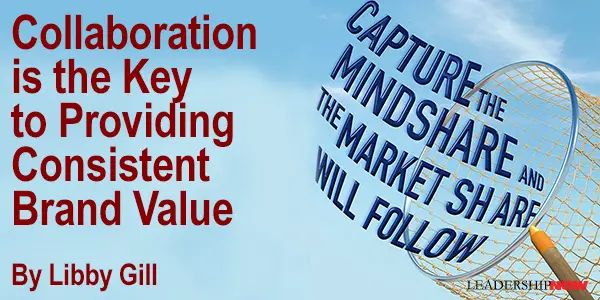
AS much as people love to over-complicate the topic of branding, simply put, a brand is a promise of value. The most successful brands - the ones I call Mindshare Brands - are those that deliver or over-deliver on that value promise consistently over the long haul. Think Coca-Cola. Think Mercedes. Think Apple. Think of any brand that you count on to deliver what you want every single time - or pretty darn close to that. Even the big guys slip occasionally, though mistakes well handled can actually be terrific branding opportunities. So how do you continually commit and re-commit to going the extra mile for your customers? How do you stay focused in the face of crazy busy workloads and constant change? The key to providing consistent value, despite the obstacles you will inevitably encounter, is to build a culture of collaboration where everyone's goal is to delight the customers and ensure their swift return. In today's highly competitive business climate, it's nearly impossible for anyone to succeed by going it alone. So it's well worth the time and effort it takes to create a collaborative atmosphere based on trust, respect, and openness. Here are some strategies you can employ to jumpstart the process:
 
Posted by Michael McKinney at 08:28 PM
08.15.13

9 Tips to Avoid Getting Sidetracked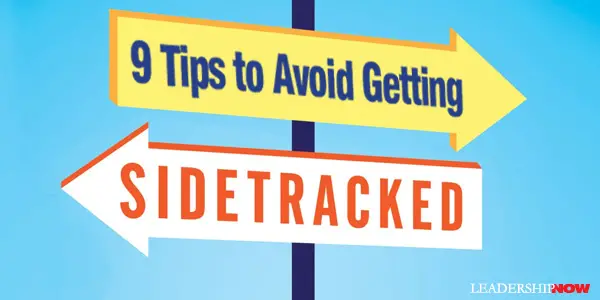
TOO OFTEN WE think we know exactly what is going on in our minds and what is affecting our behavior. Even though we are committed to our plans we find that the end result bears little resemblance to our best intentions. Somehow we get sidetracked. We face internal pressures, relational pressures, and external pressures to take us off course. These pressures keep us from being consistent with our self-image as capable, competent, and honest individuals. In Sidetracked, Francesca Gino has highlighted nine reasons we get sidetracked—why our decisions get derailed—and provides solutions to avoid them. Here are nine tips to avoid getting sidetracked:Raise your awareness of the subtle influences on your decisions. For instance, our biased views of how competent and capable we are can make us unwilling to listen to the opinions of others. We tend to value expensive advice over inexpensive advice. Take your emotional temperature before you make a decision to see if an unrelated event is affecting the decision at hand. Our moods affect our decisions. Ask, "Is this emotion clouding my judgment?" The emotions we experience while implementing our plans can sidetrack us. Zoom out to include more information when making our decisions. Ask: "Why did I choose the information that I did?" "What information am I missing?" "What was my initial plan?" and "Why did I embark on this course of action?" Take the other party's point of view. We tend to overestimate the extent to which others share our attitudes and feelings, to believe that others have more access to our internal states than they actually do, to use ourselves as a standard when evaluating others, and to draw on our own experiences when anticipating how others will evaluate us. What seems obvious to us is not always obvious to others. Question your bonds—your links and similarities—to those around you and consider whether these bonds may be influencing your decisions for the worse. The behavior and decisions of others not only affect the decisions we make but the conclusions we reach about other people. “We don’t have a stable moral compass.… What I’ve found in my research is that it’s easier to pick up the unhealthy habits of others than to be swayed by their good behaviors.” Check your reference points to consider the motives—social comparisons and emotions—behind your decisions. "The way we define and understand ourselves is an inherently social process….Our decisions are biased by the comparisons we strategically choose in order to alter how we see ourselves." By becoming more attentive to frames, we can become less influenced by them. Consider the source to determine if your judgment is warranted based on all the information available to you. Are you evaluating the right information? "We tend to "rely on irrelevant, but seemingly important, information when making judgments." Investigate and question the frame to see its impact on our behavior or decision. A change in framing can cause us to accept or abandon our carefully thought out goals and plans. How we frame things dramatically affects our acceptance and commitment. In an interesting study the author and others conducted, they found that framing the orientation and training process in a way that encourages self-expression of personal identities and signature strengths produces beneficial effects for the employees and the organization—namely motivation and retention. Make your standards shine by putting them first and discussing them more often. Too often we just need the right opportunity to come up with a reason to reinterpret our behavior. 
Posted by Michael McKinney at 02:48 PM
08.06.13

The Perils of Perfection
PERFECTIONISM is a dilemma for many powerful people: It is surely a drive that helps them get where they are. But it can also be a straitjacket that hampers what people within an organization are allowed to believe or express. Perfectionism often leads to excessive control or anger. The control reflex shows up in traditional management practices. It can also regulate both the business and social agenda of organizations. Sometimes the powerful allow their organizations to be bullied by special-interest groups, figuring that it is better to be faultless than realistic. In the long run, the price is both power and credibility. The Economist writes "To ban 'inappropriately directed laughter, as the University of Connecticut did, is no way to change the attitude of the laughter." In an address before the Interagency Committee on Women Law Enforcement, Judge Maryanne Trump Barry said, "I stand second to none in condemning sexual harassment of women . . . but what is happening is that every sexy joke of long ago, every flirtation, is being recalled by some women and revised and re-evaluated as sexual harassment. Many of these accusations are, in anybody's book, frivolous." Censorship is often a direct attempt to deprive reality of its power, and the powerful often accede to it for well-intentioned reasons. They support the underlying moral intention. This idealized strength of character can lead to weakness in reality. While truth may be subject to interpretation and bent to give certain goals needed emotional intensity, the intentional and obvious distortion of reality is a dangerous game and one that does not play well for long in a knowledge society. Unfortunately, with everyone intent on putting a spin on the facts, censorship of all sorts is enjoying something of a heyday. Former NBC News President Reuven Frank gave a passionate speech about censorship of the media in the Gulf War and the resulting coverage reaching viewers in their homes: "We saw no people. We saw no fighting. We saw 'smart bombs' taking out targets with great efficiency," Frank declares. "[Several months later, we were to] learn that no more than one-fifteenth of the bombs dropped on the Iraqis can be classified as 'smart' bombs; that the most effective planes were not the high-technology, high-priced Stealth fighters but the clumsy, lowly A-10 attack planes, from another generation." Frank pointed to a hero general, "saying over and over, 'I will not have you [the media] on my battlefield. 'My battlefield.' It's a challenging thought." The alarming rise of self-imposed censorship really reflects a lack of courage on the part of even powerful people who cannot reconcile reality with social justice and the pressure of interest groups. In the Wall Street Journal, Irving Kristol wrote a provocative, actually daring, article titled "America's Multiculturalism Tragedy." He reports, "Recently, a journalist telephoned five leading professors of Egyptology, asking them what they thought about the claim of a black Egyptian provenance for Western civilization [the contention that Western European civilization is really the product of that cultural group]. They all said it is nonsense. At the same time, they all withheld permission for their names to be attached to this risky, 'politically incorrect' position." Censorship rarely benefits the powerful. If anything, it merely avoids troublesome squabbles and pacifies special-interest groups. But the powerful are the ones who generally court censorship into their own organizations. They do so by having tantrums about being photographed at the wrong angle or wondering why a regulatory investigator brings up "that" topic once again. So the organization reacts by thinking there is a mandate at the highest level to control what is inquisitive, awkward, and external. The curse of perfectionism often also leads to anger. A renewed interest in confrontation—in mixing it up—is making a comeback in the management repertory, but it is risky business. Business Week has marked the resurrection of "hop-to-it," bad-news memos that more executives are sending when they "feel a need to reach out and shake somebody . . . Most often, the message is grim: Business is bad, and it's your fault." That's empowering the organization with blame and its unhealthy and unsustainable. Disputes are, of course, unavoidable, but great care has to be taken as to where and how they occur. When the powerful confront one another, it is important to remember who's in the audience—a truth every bit as important for prelates as for presidents. A Bruce Posner piece in Inc. in 1991 said, "Disagreements can be good . . . But be conscious of where you have them. Understand that if you and your number-two voice your differences in front of other people, you'll lose control over how things are interpreted once a decision is made. No matter what the issue is, employees are going to look for a loser. " President Bill Clinton has gotten some notoriety for his temper as an offshoot of his high expectations. Paul Johnson says John Quincy Adams was a "superb hater." He compiled lists of enemies throughout his life, and, at the end, created a list of the thirteen men who had done him the most harm. Revenge is a major motive of demonic power. Anger, when it is momentary and explosive, may just be a part of management style. However, there is little room for sustained bitterness in today's version of power. In fact, bitterness is a sure sign of weakness. J. C. Penney Chairman William Howell treats the matter well when he says, "Is the manager forgiving? He or she simply can't afford to harbor bitterness. It drains the manager's energy and takes focus off things that are important." John Milton's Paradise Lost is the archetypal study of bitter, demonic power. Milton's demons sue for war, "which if not victory is revenge." Yet there is ever a mesmerizing streak of goodness or refinement in the diabolical tyrant. The Hitlers and Husseins are always sharing cream puffs with youngsters or wiping away a child's tear with a tissue. Milton says of his Satan: "His form had not yet lost all her original brightness." It is that truth that makes so much vengeful thinking seem ostensibly righteous and dignified. Another aspect of perfectionism is the throb of constant, superior performance. Much advice has been given about what constitutes peak performance, but peak performance can degenerate into a counter-productive arrogance of perfectionism in a world that is increasingly driven by long-term goals. Any powerful person is better off targeting really sustainable excellent performance. What diverts the powerful from this latter path is pressure. When power is under pressure and must measure and manage its reactions in the face of threat, there are four particular pitfalls that can be dangerously consuming: 1) not identifying and using all the available resources; 2) failure to deal quickly with negative issues on one's own team; 3) overestimating casually promised support (generally by presumed "allies" in one's extended network); and 4) not recognizing fear and intimidation by opponents for what they are. Under pressure, the classic response of the powerful is to strive harder. The more productive course may be to scan for the classic pitfalls and react methodically. Von Clausewitz wrote, "All war supposes human weakness, and against that it is directed," a statement well worth pondering. And, perfection can be a formidable weakness.  
Posted by Michael McKinney at 06:07 PM
08.02.13

Are You Losing Inside the Box?
IF you're losing inside the box, don't bother trying to compete outside the box. If you don't have the basics in place or more to the point, if you aren't excelling at the basics, then no one cares about your uniqueness or your wow factor. Joe Calloway is one of those people that cuts through the clutter and gets to the core issue. His book Be the Best at What Matters Most is full of that—what matters most. He makes a point that is important on a number of levels. For businesses, the wow factor is nice but what is more important is to "deliver on your promise every time, with every customer, with amazing consistency." He adds, "You want to constantly innovate and improve for one purpose: to win inside the box. By 'inside the box,' I mean those things that matter most to the marketplace. These are the basic expectations of your customers." Calloway says that we should take another look at the basics of our business and be sure that we are hitting 10 on a scale of 1 to 10 inside the box before we start thinking about how we can surprise our customers. "The battle is won and lost inside the box." Regarding the random acts of wow that we hear about from time to time, Calloway says that they are wonderful and we should do them. "But that's not where you'll win or lose the game. Don't think that some once-a-year special thing that you do ever takes the place of consistently being the best at what matters most. Put your energy, effort, and focus into doing a really, really great job on the basics and into consistency of performance. That determines how you treat your customers." This is great material and it also applies in terms of your leadership. Are you losing inside the box? It's tempting to try to put on the showier aspects of leadership and ignore the hard-won aspects of trust, communication and character. We want the choicest assignments and the most visible trappings of leadership. It's nice to be the superhero. But great leadership is won and lost inside the box. Are you generous with information? Are you respectful? Do you listen? Do you communicate? Do you take the time to build others? Do you set a proper example? Can you follow when necessary? Can you set your ego aside? Are you accountable? Do you understand that it's not about you? It's fun to be spectacular and to be seen. You may be very competent, charismatic, and eloquent, but if you are not getting the basics right, then you're a liability, not an asset. Leader's derail quickly when they make it about them; when the organization exists to serve them and their agenda. I've seen more than a few leaders derail because they forgot to develop and sustain one or two of the basic practices of good leadership inside the box. They looked good on the outside but it was the day-to-day that they struggled with and never addressed. The real work of leadership is often the unsung, behind-the-scenes work of serving others that must be done on a daily basis. It may not give us that temporary ego boost, but it is the most rewarding work and has the biggest payoff in the long run. So, the real question is, are we working to improve the basics on a daily basis? Are we hitting 10 on a scale of 1 to 10 inside the box?

Posted by Michael McKinney at 07:48 AM
08.01.13

First Look: Leadership Books for August 2013Here's a look at some of the best leadership books to be released in August.




For bulk orders call 1-800-423-8273  Build your leadership library with these specials on over 120 titles. All titles are at least 40% off the list price and are available only in limited quantities. “There are worse crimes than burning books. One of them is not reading them.” — Joseph Brodsky
Posted by Michael McKinney at 12:21 AM
|
BUILD YOUR KNOWLEDGE


How to Do Your Start-Up Right STRAIGHT TALK FOR START-UPS 
Grow Your Leadership Skills NEW AND UPCOMING LEADERSHIP BOOKS 
Leadership Minute BITE-SIZE CONCEPTS YOU CAN CHEW ON 
Classic Leadership Books BOOKS TO READ BEFORE YOU LEAD |
|